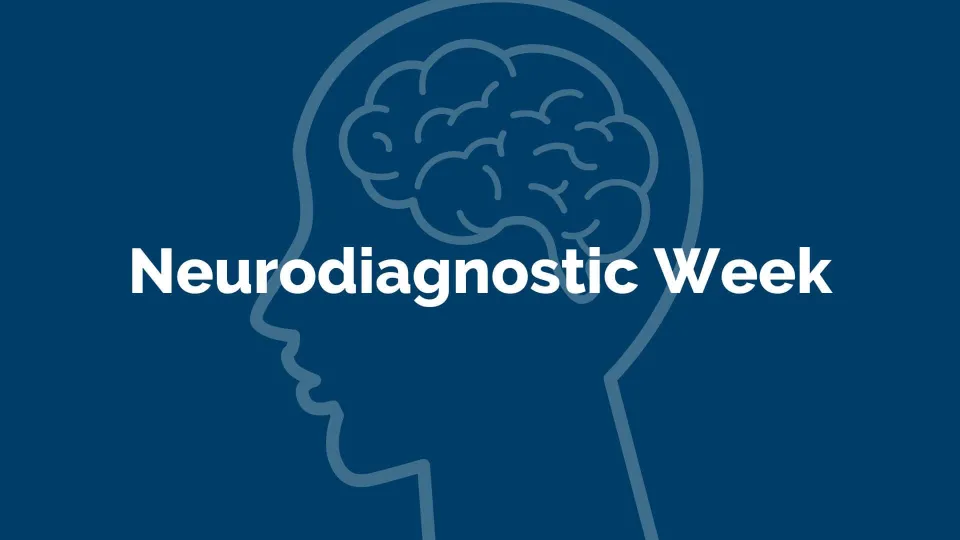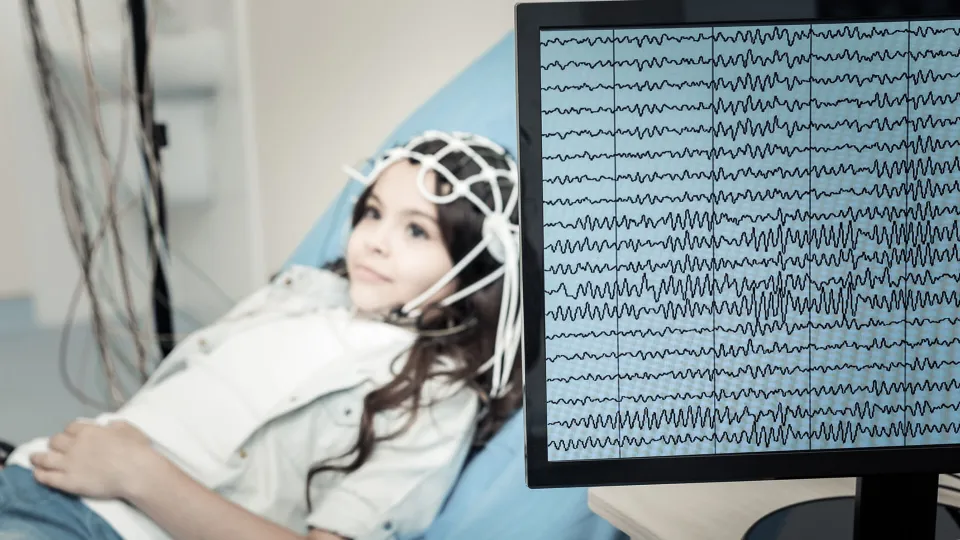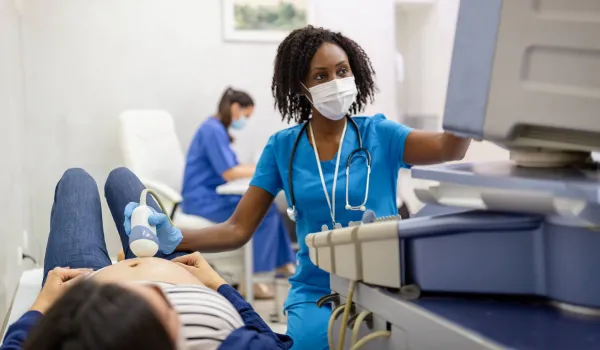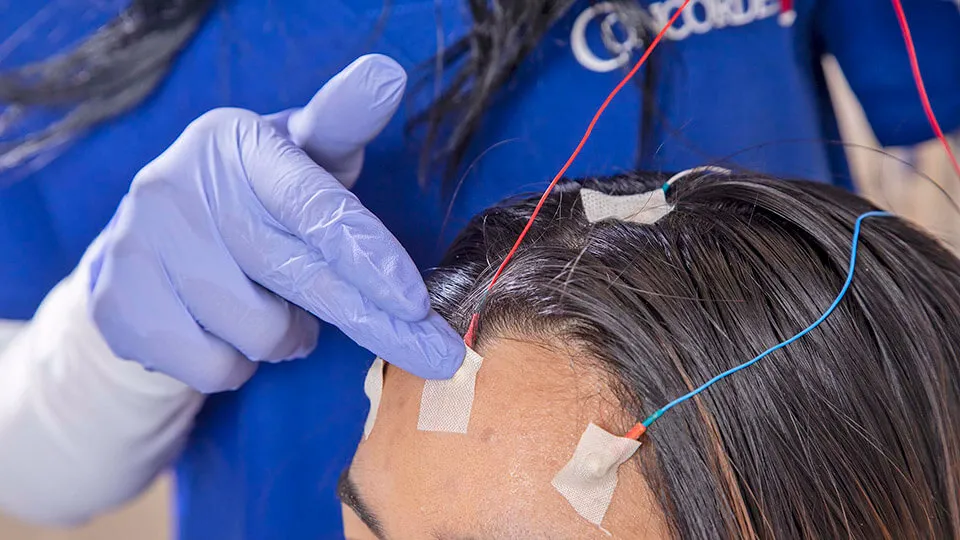
Neurodiagnostic technologists record electrical activity in the nervous system and brain to help physicians evaluate and diagnose neurological conditions. These health care professionals can conduct a variety of different tests which may help doctors identify conditions like degenerative brain disease, epilepsy, strokes, and seizure disorders. Working as a neurodiagnostic technologist, individuals can take a hands-on role in helping patients with brain and nervous system conditions or concerns. Here's what you need to know about this career path.
What to Expect From a Career as a Neurodiagnostic Technologist
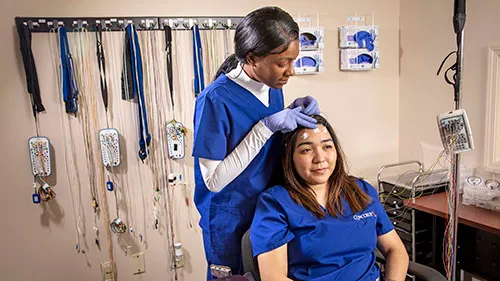
What Does a Neurodiagnostic Technologist Do?
Neurodiagnostic technologists are part of the patient's health care team, working alongside nurses, physicians, and specialists to help patients evaluate and understand their conditions. This is a great career for individuals who are comfortable with technological equipment, enjoy helping others, and have a certain fascination for the brain and nervous system.
Though a neurodiagnostic technician sounds similar to a technologist, the technologist has a more complex role. A technician simply works under the supervision of the technologist or other health care professional to perform basic tasks that require minimal training. Technologists are more involved in the testing process.
Job Duties
Neurodiagnostic technologists can perform many different tests, including:
- Electroencephalograms (EEGs): An EEG records electrical activity in the nervous system and brain via electrodes attached to the patient's scalp. The EEG transmits information via a series of wavy lines. EEGs are often used on patients with epilepsy, dementia, head injuries, or brain tumors.
- Polysomnograms (PSGs): Tests that monitor brain function while sleeping to help diagnose sleep disorders such as obstructive sleep apnea syndrome, narcolepsy, and periodic limb movement disorder.
- Magnetoencephalography (MEG): Tests that detect and record the magnetic fields associated with certain types of activity in the brain. This technology is used for pre-operative brain mapping and epilepsy surgery.
- Intraoperative neurophysiological monitoring (IONM): IONM keeps track of patients' nerve responses during peripheral nerve, vascular, neurosurgical, and orthopedic surgeries. This can help prevent complications leading to nerve damage or death. IONM can also help map the nervous system.
- Autonomic function testing: Tests to evaluate the function of the autonomic nervous system, which pertains to involuntary processes like respiration, digestion, body temperature, blood pressure, and heart rate. This test is commonly used to identify cases of autonomic neuropathy associated with autoimmune diseases and diabetes.
- Nerve conduction studies (NCS): Tests that deliver stimulus to nerves to test the speed of response. These tests can identify whether you have a nerve disorder versus a muscle disorder. NCS can help diagnose carpal tunnel syndrome, herniated disk disease, Guillain-Barre syndrome, sciatic nerve problems, and more.
- Evoked potentials (EP) studies: EP tests stimulate a certain part of the body and record the patient's response. The EP will reflect any abnormalities or delays. Types of EPs include:
- Brainstem auditory evoked potentials (BAEP): Clicks sounded before each ear.
- Sensory evoked potentials (SEP): Short electrical pulses delivered to the limbs.
- Visual evoked potentials (VEP): Visual patterns displayed on a screen.
- Long-term monitoring (LTM): EEG monitoring conducted over a long period of time, often using mobile devices that transmit information wirelessly. This is primarily used for patients with epilepsy. However, it can also help diagnose sleep disorders, movement disorders, cerebrovascular disease, and some psychiatric conditions.
Most of these tests are completed in a lab or hospital environment and take one or two hours. Some tests, like LTM, take place over the course of days. PSGs are typically used in overnight sleep studies. Neurodiagnostic technologists are responsible for setting up and calibrating the appropriate equipment and preparing the patient for the procedure. This includes answering questions, easing anxieties, and properly positioning the patient for the procedure.
During the procedure, the technologist will continue to communicate with the patient while monitoring the results and recording data in the patient's record for later analysis. The technologist will then consult with the patient's physician to interpret the data, evaluate the results, and determine the next plan of action.
Work Environment
Neurodiagnostic technologists typically work in health care settings like private practices, clinics, sleep labs, and hospitals. Some technologists may conduct tests in patients' homes. Those focused on research studies might work in educational institutions or other research facilities. Neurodiagnostic technologists often spend long hours on their feet throughout the day. Depending on their work environment, they may have to work overnight or on weekends to complete the required tests and studies.
Job Outlook
According to the Bureau of Labor Statistics (1), job opportunities for health technologists and technicians are projected to increase by 7% from 2022 to 2032. This is higher than the national average of just 3% for all occupations. As the aging population gets larger, there will be a greater need for diagnostic tests. Conditions like neurodegenerative diseases and strokes can be evaluated using neurodiagnostic technology, which makes this area of particular use to elderly patients who commonly suffer from these conditions.
Preparing for a Career as a Neurodiagnostic Technologist
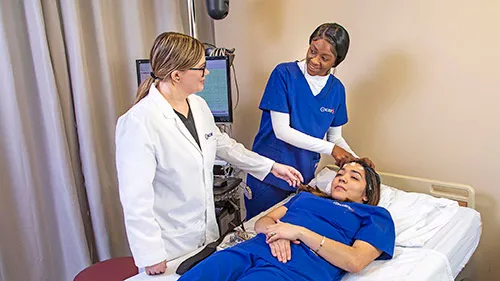
Would You Be a Good Neurodiagnostic Technologist?
Individuals who have an eye on this career early can start preparing in high school. Courses in science, biology, math, and computer science are all relevant to a career as a neurodiagnostic technologist. Students can benefit from any activities that hone technical and analytical skills, as these are critical to operating the complex equipment that neurodiagnostic technologists use.
The technical side of the work is only one part of what a neurodiagnostic technologist does. These individuals must also have excellent communication and interpersonal skills so they can communicate well with patients and help them feel comfortable in what might otherwise be a frightening or unnerving experience.
Volunteering to work in a hospital, nursing home, or clinic can provide valuable hands-on experience by helping individuals who are struggling with various health conditions. This type of volunteer work can also improve one's adaptability, patience, and attention to detail, all of which are key skills for a neurodiagnostic technologist to have.
How to Become a Neurodiagnostic Technologist
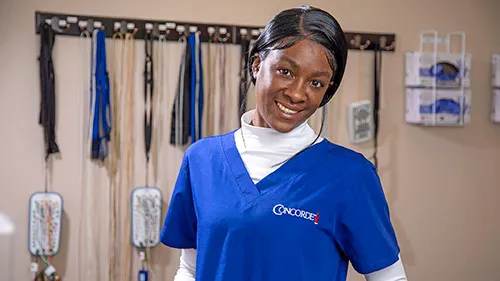
A Day in the Life of a Neurodiagnostic Technologist
Fortunately, you can get on the path to a successful career as a neurodiagnostic technologist by getting started with just an associate degree in neurodiagnostic technology, which typically takes less than two years. If you know that you're interested in this field of study early on, you can begin building a solid foundational understanding of the field by focusing on courses in anatomy, biology, technology, and science in high school. These subjects will all help equip you for the training necessary to become a neurodiagnostic technologist after graduation.
Educational Requirements
You can earn a Neurodiagnostic Technology associate degree in as little as 17 months with Concorde. This program equips you with the skills and knowledge needed to properly record electrical activity associated with the nervous system. You will learn how to properly conduct numerous tests including EEG, EP, LTM, PSG, NCS, and IONM.
As part of your education, you will receive training in properly placing electrodes and understanding the results produced therein. Though doctors and other specialists will handle the final interpretation of these test results, you will learn how to assess the preliminary findings, determine whether you've captured meaningful data, and produce detailed reports on the initial findings.
The courses (2) in Concorde's Neurodiagnostic Technology associate degree program include anatomy and physiology, electrodiagnosis, neurodiagnostics, therapeutic intervention, polysomnography, human growth and development, and more. The program includes a particular focus on recording and monitoring technologies, electrode use, and patient monitoring so that graduates emerge from the classroom well-equipped to tackle the hands-on use of appropriate technologies in this field.
Certification
There is no mandated licensure for neurodiagnostic technologists. However, employers prefer candidates who have at least one certification demonstrating their expertise. Upon completion of an associate's program, graduates will be eligible to take professional certification examinations offered by:
- American Board of Registered Electroneurodiagnostic Technologists, Inc. (ABRET).
- American Association of Electrodiagnostic Technologists (AAET).
- Board of Registered Polysomnography Technologists (BRPT).
Credentialing in these specialties may require additional individualized training after graduation.
If you're interested in training to become a neurodiagnostic technologist, Concorde can help get you on the right path. Check out their associate degree program now. In under two years, you can be on your way to actively working as a neurodiagnostic technologist and helping patients with their health concerns.
Interested In How To Become a Neurodiagnostic Technologist?
Click here to explore Neurodiagnostic Technology Programs near you!
Footnotes
“Radiologic & MRI Technologists,” Bureau of Labor Statistics, https://www.bls.gov/ooh/healthcare/radiologic-technologists.htm#tab-6
“Neurodiagnostic Technology,” Concorde, https://community.zoomifier.com/v-JRyTIEQcba0P0VIIsQTQ2mEcgcitfFOvl5z1mLkJ_VY?sid=12575&p=mYEtTq0-iHETnkLfFVKGjmEcgcitfFOvl5z1mLkJ_VY&nosplash=1
Take The Next Step Towards a Brighter Future
Interested in learning more about our Neurodiagnostic Technology program?
We have a Concorde representative ready to talk about what matters most to you. Get answers about start dates, curriculum, financial aid, scholarships and more!

